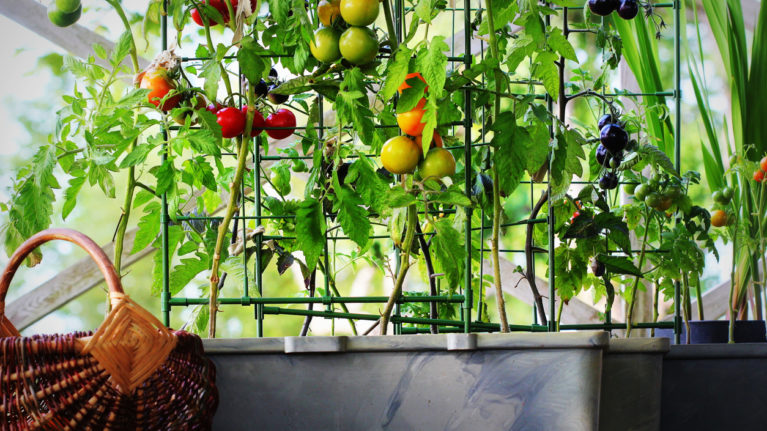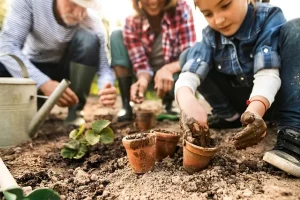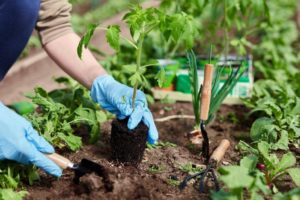I. Introduction
A. Definition of Indoor Gardening
In the fast-paced world we live in, the concept of bringing nature indoors has gained immense popularity. Indoor gardening involves cultivating plants within the confines of your home, creating a green oasis that not only enhances aesthetics but also contributes to a healthier living space.
B. Growing Trend in Indoor Gardening
What was once considered a hobby for a niche group has now evolved into a widespread trend. More people are recognizing the joy and benefits of cultivating their little piece of nature within the comfort of their homes.
C. Benefits of Bringing Nature Indoors
Beyond the beauty of lush greenery, indoor gardening offers a myriad of advantages. Improved air quality, reduced stress, and a sense of accomplishment are just a few of the positive outcomes that accompany this growing trend.
II. Getting Started
A. Choosing the Right Indoor Plants
Before diving into indoor gardening, it’s crucial to select plants that thrive in indoor environments. Low-maintenance varieties such as snake plants, pothos, and succulents are excellent choices for beginners.
B. Understanding Light and Temperature Requirements
Different plants have varying light and temperature needs. Ensure you place your indoor garden in areas that receive adequate sunlight, and be mindful of temperature fluctuations that might affect plant growth.
C. Selecting the Appropriate Containers
The choice of containers plays a vital role in indoor gardening. Opt for containers with proper drainage to prevent waterlogging, and consider the aesthetic appeal of pots that complement your indoor space.
III. Setting Up Your Indoor Garden
A. Arranging Plants for Aesthetic Appeal
Create visually appealing arrangements by considering the size, shape, and color of your plants. Experiment with different layouts to find the one that suits your taste and complements your living space.
B. Proper Soil and Fertilization
Use high-quality soil mixes tailored to indoor plants. Fertilize regularly but sparingly to provide essential nutrients without overwhelming your plants.
C. Watering Techniques for Indoor Plants
Avoid the common pitfall of overwatering by understanding the specific water needs of each plant. Develop a watering schedule and pay attention to signs of dehydration or excess moisture.
IV. Overcoming Challenges
A. Common Issues in Indoor Gardening
Indoor gardening comes with its challenges, including pests, diseases, and environmental factors. Learn to identify and address these issues promptly to maintain a thriving indoor garden.
B. Pest Control Without Harmful Chemicals
Embrace natural pest control methods to protect your indoor garden. Neem oil, insecticidal soap, and introducing beneficial insects are effective alternatives to harmful chemical pesticides.
C. Dealing with Limited Space
Indoor gardening is possible even in small living spaces. Utilize vertical gardening techniques, hanging planters, and creative shelving to maximize the use of available space.
V. Innovative Indoor Gardening Ideas
A. Vertical Gardens
Vertical gardens not only save space but also add a striking visual element to your indoor oasis. Consider installing wall-mounted planters or creating a hanging garden using macramé plant holders.
B. Herb Gardens in the Kitchen
Bring functionality to your indoor garden by cultivating herbs in your kitchen. Not only will you have fresh ingredients at your fingertips, but the aromatic herbs will enhance your cooking space.
C. Incorporating Indoor Water Features
Elevate your indoor garden’s tranquility by introducing water features. Small tabletop fountains or mini aquatic gardens can bring the soothing sounds of water into your home.
VI. Health and Wellness Benefits
A. Air Purification
Many indoor plants act as natural air purifiers, filtering out pollutants and enhancing indoor air quality. Spider plants, peace lilies, and snake plants are notable choices for cleaner air.
B. Stress Reduction and Mental Well-being
The act of caring for plants has been linked to reduced stress and improved mental well-being. Engaging with your indoor garden provides a therapeutic escape from daily pressures.
C. Connection to Nature
Indoor gardening fosters a sense of connection to nature, even in urban environments. Bringing the outdoors inside creates a nurturing space that promotes relaxation and contemplation.
VII. Indoor Gardening as a Sustainable Practice
A. Reducing Your Carbon Footprint
Indoor gardening can contribute to sustainability by reducing the need for store-bought produce. Growing your fruits, vegetables, and herbs at home minimizes transportation-related carbon emissions.
B. Using Recycled and Eco-friendly Materials
Embrace sustainability further by using recycled or eco-friendly containers for your indoor garden. Repurposed containers and sustainable materials contribute to a greener lifestyle.
C. Composting in a Limited Space
Even with limited space, composting is possible. Utilize small compost bins or explore worm composting to recycle kitchen scraps and enrich your indoor garden’s soil.
VIII. Sharing Your Indoor Garden Journey
A. Social Media and Online Communities
Share your indoor gardening experiences on social media platforms and join online communities. Connect with like-minded individuals, exchange tips, and draw inspiration from the vast world of indoor gardening enthusiasts.
B. Hosting Indoor Gardening Workshops
Consider hosting indoor gardening workshops to share your knowledge with others. Whether in-person or virtual, these workshops can create a sense of community and encourage more people to embark on their indoor gardening journey.
C. Gaining Inspiration from Others
Draw inspiration from fellow indoor gardeners. Explore different styles, techniques, and plant varieties to continually evolve and enhance your indoor garden.
IX. Conclusion
A. Recap of the Benefits of Indoor Gardening
In conclusion, indoor gardening offers a multitude of benefits, from enhancing your living space’s aesthetics to promoting health and well-being. The joy of cultivating your green haven is an experience worth embracing.
B. Encouragement for Readers to Start Their Indoor Garden Journey
If you haven’t already, now is the perfect time to embark on your indoor gardening journey. Start small, experiment with various plants and arrangements, and witness the transformative power of bringing nature indoors.
X. FAQs
- Can I start indoor gardening without any prior experience? Absolutely! Many indoor plants are beginner-friendly, requiring minimal care and attention.
- What are the best low-maintenance plants for beginners? Snake plants, pothos, and succulents are excellent choices for beginners due to their resilience and low maintenance.
- How do I prevent overwatering my indoor plants? Develop a watering schedule based on each plant’s specific needs and check the soil moisture before watering.
- Are there indoor gardening techniques suitable for small apartments? Yes, vertical gardening, hanging planters, and compact containers are great options for maximizing space in small apartments.
- Can I use artificial light for my indoor garden? Absolutely. High-quality LED grow lights can effectively supplement natural light, especially in spaces with limited sunlight exposure.



